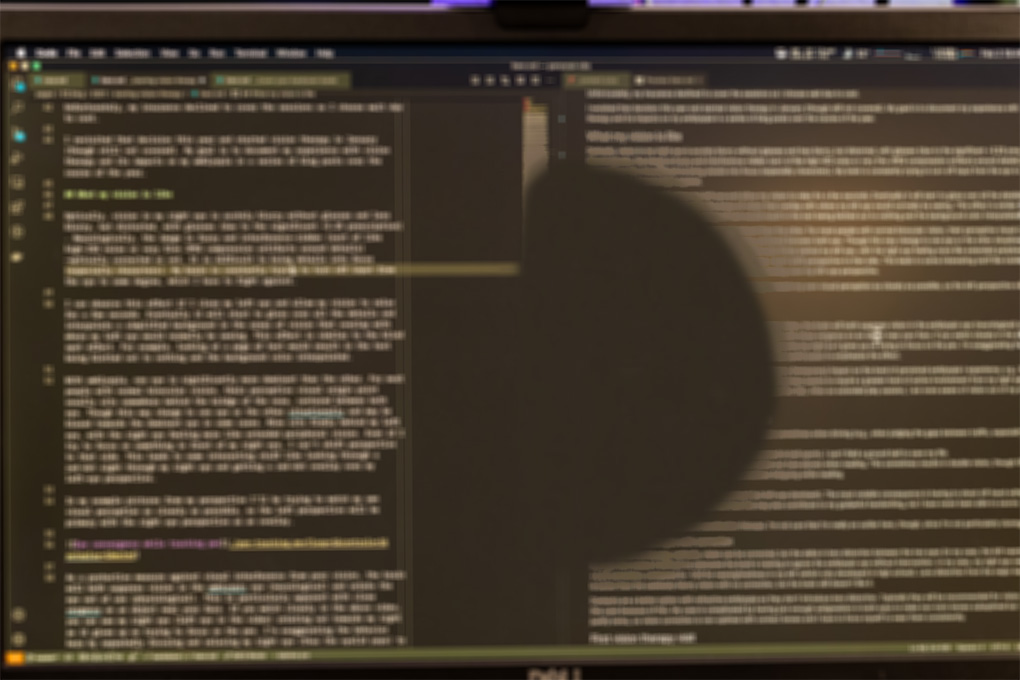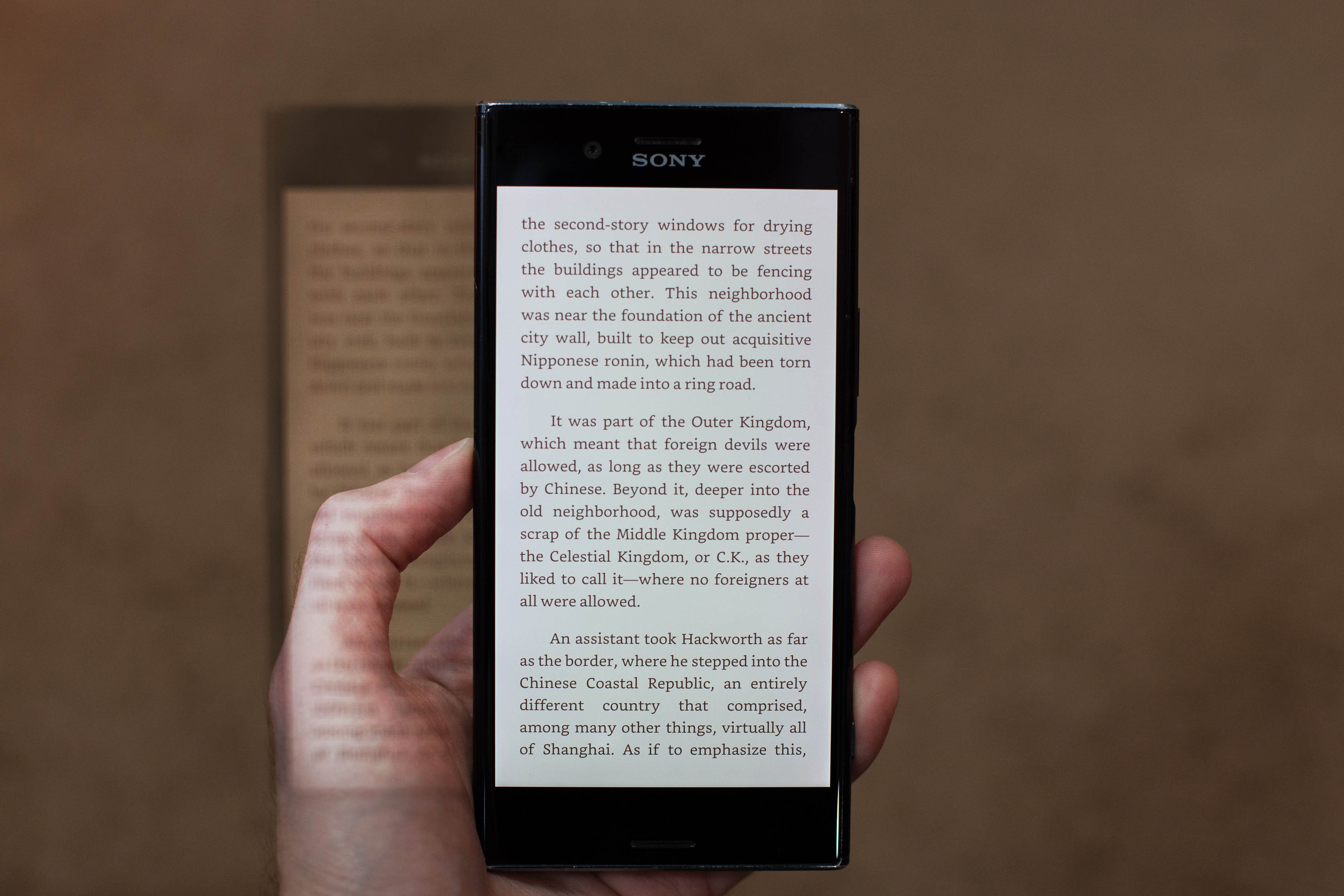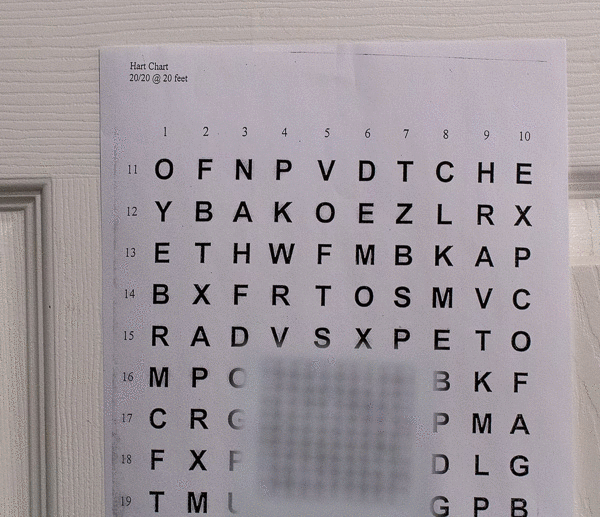Starting vision therapy
Upd:
Table of Contents
Introduction
I have refractive amblyopia which is a condition where the brain tends to suppress sensory input from one eye due to poor vision in that eye (ambloypia). The refractive part is the cause, which is substantially worse vision in my right eye. Even though, with glasses, vision can be optically corrected for my right eye I am (neurologically) unable to see well with it, as the brain filters its input to protect overall vision.
My amblyopia leads to a number of vision issues: ocular cross-dominance (left-eye dominant with right-side dominance), depth perception inconsistency (though I have no issues with autostereograms), difficulty with object tracking, right-eye vision suppression, eye control issues, occasional double vision, and infrequent motor control challenges.
Historically, the professional consensus was that much past six years old, it wasn't possible to correct amblyopia due to decreased brain elasticity. After mostly unsuccessful attempts at patching starting around six, and with a few other false starts up to around eleven, I forget about the issue for many years. However, in 2018 I went to a new optometrist who suggested I might benefit from vision therapy.
I started vision therapy in January 2021. My goal is to document my experience with vision therapy and its impacts on my amblyopia in a series of blog posts over the course of the year. This first post covers my history with amblyopia, some of my subjective experiences with the condition, and my introduction to vision therapy.
History
My parents became aware of my vision issues at what would now be considered a young enough age for correction—six—but at the time was considered borderline (although younger is still better). The typical treatment is glasses with an eye patch over the dominant eye to force the brain to use the dysfunctional eye. My compliance with the patch was not ideal and although I believe I did get some improvement in neurological function for my right eye, I didn't wear the patch enough to resolve the amblyopia.
This is not surprising, as compliance is typically a challenge in children (especially young boys). Eventually I aged out of what my optometrist considered the window for possible correction and moved on with mediocre vision.
Revisiting vision therapy
In 2018, at the suggestion of my then-new optometrist, I underwent a vision therapy screening with her to evaluate my vision gaps and suitability for therapy. Based on her evaluation, she thought I'd be an excellent candidate and that we could likely achieve significant improvements in vision within about a year of therapy (give or take—there is very little data on adult vision therapy treatment). She recommended I read Fixing My Gaze, which is about the author's success with vision therapy later in life.
Unfortunately, my insurance declined to cover the sessions so I choose wait due to cost. I revisited that decision this year and started vision therapy in January (though still not covered).
What my vision is like

Optically, vision in my right eye is acutely blurry without glasses and less blurry, but distorted, with glasses (due to the significant +3.25 prescription). Neurologically, the image is fuzzy and interference-ridden (sort of like high-ISO noise or very fine JPEG compression artifacts around details)—optically corrected or not. It is difficult to bring details into focus (especially characters). My brain is constantly trying to turn off input from the eye to some degree, which I have to fight against.

I can observe this effect if I close my left eye and allow my vision to relax for a few seconds. Eventually it will start to gloss over details and interpolate a simplified background in the areas of vision that overlap with where my left eye would normally be seeing. This effect is similar to the optic nerve blind spot effect. For example, looking at a page of text would result in the text being blotted out to nothing and the background color interpolated.
With amblyopia, one eye is significantly more dominant than the other. For most people with normal binocular vision, their perceptive visual origin point usually sits somewhere behind the bridge of the nose, centered between both eye. Though this may change to one eye or the other situationally and may be biased towards the dominant eye in some cases. Mine sits firmly behind my left eye, with the right eye feeling more like extended peripheral vision. Even if I try to focus on something in front of my right eye, I can't shift perspective to that side. This leads to some interesting stuff like looking through a red-dot sight through my right eye and getting a red-dot overlay over my left-eye perspective.
In the example pictures from my perspective I'll be trying to match my own visual perception as closely as possible, so the left perspective will be primary with the right eye perspective as an overlay.
As a protective measure against visual interference from poor vision, the brain will both suppress vision in the amblyopic eye (neurological) and rotate the eye out of use (physiological). This is particularly apparent with close vergence on an object near your face. If you watch closely in the above video, you can see my right eye (left eye in the video) rotating out towards my right as it gives up on trying to focus on the pen. I'm exaggerating the behavior here by repeatedly focusing and relaxing my right eye (thus the eyelid pops) to emphasize the effect.
Interestingly, sometimes artificial 3D experiences seem to have a (temporary) impact on the level of perceived amblyopia I experience, e.g., the Nintendo 3DS, virtual reality, and 3D movies. In particular, the 3DS's 3D screen seems to require a greater level of active involvement from my right eye (particularly with the first-generation device's tight sweet spot for 3D). After an extended play session, I am more aware of vision out of my right eye.
Symptoms

The vision issues manifest in a few ways:
- I have inconsistent depth perception. It's most noticeable when driving (e.g., judging gaps between traffic when making a left turn).
- Difficulty with object tracking. This is most pronounced in ball sports. I can't field a ground ball to save my life.
- My right eye tends to become suppressed and rotate out (see above) when reading. This sometimes results in double vision, though the suppression usually prevents that, and is sometimes fatiguing while reading.
- Ocular cross-dominance (right-side dominant but left-eye dominant). The most notable consequence is having to shoot off-hand with rifles to be able to see down the sights. I was told that this may also contribute to my awful handwriting, but I have never been able to source the assertion.
- Infrequent motor control and coordination hiccups. I'm not sure that I'm really an outlier here, though, since I'm not particularly clumsy.
Physiological challenges with correction
With refractive amblyopia, optically, vision can be corrected, but the delta in lens distortion between the two eyes (in my case, the left nearsighted and the right far) makes it difficult to overcome the brain's training to ignore the amblyopic eye without intervention, as you're just swapping one visual aberration (blurring) for another (distortion). In my case, my right eye requires a +3.25 correction, compared to -1.00 for nearsightedness in my left (which only developed in high school). Lens distortion from the significant lens correction is better than the uselessly-blurry vision with no correction, but the brain still doesn't like it.
Contacts are a better option with refractive amblyopia as they don't introduce lens distortion. Typically they will be recommended for vision therapy in this case because of this. Unfortunately for me, I have just enough astigmatism in both eyes to make non-toric lenses suboptimal but not enough to justify torics.
First vision therapy visit
We had a few goals with the first visit:
- Work through the mechanics of the starting exercises so I could begin doing them at home.
- Evaluate additional vision functionality beyond what was covered in the vision therapy exam.
- Establish some metrics to track progress.
We ended up going over time in the first visit, so I came back a second day to complete the exercise training and establish more metrics.
I learned how to do a jump duction/jmup convergence exercise with a Brock string (this one had me sweating at the end), working on close convergence with the Brock string, saccadic training with near and far monocular Hart charts, monocular Michigan tracking training, and near and far eccentric circles for vergence.
Baseline vision evaluations covered:
- Evaluating image suppression in my right eye:
- Back away from a mirror while wearing polarized glasses until I was unable to maintain binocular vision (read: look at myself and see both eyes through the glasses): 5 feet.
- Using red/cyan color filtered glasses, read an anti-suppression chart: I could not.
- Evaluating vergence eye control. You're given read/cyan filtered glasses and have to focus on a series of autostereogram-style images to bring an object into focus and identify it. The software will slowly increase the distance between the left and right images:
- The first round is for wall-eyed/divergent. I had relatively few problems with this. This unsurprising since the default amblyopia response for near vision is to rotate out and disable the amblyopic eye.
- The second round is for cross-eyed/convergent. I really struggled with this and generally have difficulty focused on things in a cross-eyed way.
Exercises
For my first month of therapy, I was assigned a variety of exercises to train the brain and improve eye control.
Michigan eye tracking

This exercise has you read through a paragraph of gibberish text, consecutively finding each letter of the alphabet (ending with z on the last line of the paragraph). They had me do the exercise with one eye occluded each time (left eye, then right eye patched) and by alternatively using magnifying and reducing lenses each line. This is to train both better small detail discrimination and improved accommodation (focusing).
When I first attempted this exercise, we started with my right eye. My vision there is poor, so I had to get close to the page to discriminate letters. I did not understand the search domain, so ended up missing many letters and using almost three paragraphs of text to find the whole alphabet (there are four paragraphs on each exercise page for two days worth of exercises: one paragraph per eye per day). When the vision therapist came back to check my work, she looked at me like I had brain damage and started circling all of the letters I had missed in red pen, thinking I had misunderstood the exercise. I explained I missed some letters and didn't realize it was just the one paragraph. We had a good laugh and she said she'd never had a patient try that approach before.
Brock string exercises

The Brock string is a roughly 10-foot long string with three colored beads (green, yellow, and red) on it. It is used to train eye convergence and disrupt eye suppression in the amblyopic eye. One end of the string is attached to something and the other is held at the end of your nose. The beads should be spaced along the string at varying distances, with the green closest to your nose and the red closest to the attachment point. The goal is to focus both eyes on a bead and be able to move your focus point between beads quickly while maintaining correct vergence. When focused correctly, the string should form an X going into the focused bead.
I have two exercises with the Brock string:
- Move the green bead closer and closer to my nose, pausing to focus both eyes on the bead, until getting the bead as close to my nose as I can manage to maintain convergence on. This trains eye convergence and helps develop the muscles in my right eye for pulling the eye inward.
- With the green bead as close to my nose as I can manage to focus, space the other beads out along the string and randomly move eye focus between each bead, ensuring that eye convergence is correct with each change. This trains eye convergence and fast, accurate tracking changes.
This is a difficult exercise. My brain is not used to toeing in my right eye with close focus, so those muscles are weak (I have had to take a break after it becomes too hard to turn the eye in). After a week of practice I can already feel the difference and am noticing the position of my right eye more when looking at things up close.
Hart chart

In the Hart chart you place a letter-sized chart on the wall, stand ten feet away, and hold a small version of the chart at arm's length in front of you. You then read alternating lines of text off either the wall chart on the chart in your hand. This is usually done monocularly (i.e., with one eye occluded with a patch). The exercise trains saccadic movement and rapid accommodation. More advanced version of the exercise may alternate near and far every letter or require you to work through the chart at a specific pace and rhythm.
This is a challenge with my right eye, and I have to halve the distance to both charts in order to get sufficient letter discrimination to be able to positively identify them (most of the time).
Eccentric circles
Eccentric circles, like the Brock string exercises is an eye control and vergence exercise for both eye convergence and divergence. You are provided with two sheets of paper with mirrored circles printed on them. By placing the two sheets next to one another and either converging or diverging your eyes, you can get a double vision image of a third paper and cause a 3D depth effect on the middle of the three. For divergence, this will give you circles popping out towards you, while convergence will give circles with depth away from you.
I don't have much issue with divergence in this exercise (this is expected, since turning off and toeing out the right eye is sort of a natural state for me), but I really struggle with convergence. Both due to muscle weakness in the medial rectus and general lack of convergence eye control. I use a pen or pencil as an aid to get eye convergence, but so far have not been able to get the three-paper image with 3D effect focused.
Looking ahead
The at-home vision therapy plan is to have an appointment about every five weeks. I have my first return visit on February 22nd, which will include time with the optometrist to evaluate progress. So far, I have noticed some changes, particularly in marginal vision situations (low light, near-viewing) where my right eye would usually have been strongly suppressed where I am noticing vision out of that eye now. This seems like progress, though I'm not sure what rate of change I should expect.
Doing all of the exercises every time isn't particularly time consuming (may 30 minutes per day), but is started to stretch my limits of self-coercion a bit. Hopefully as it becomes more of a habit maintaining the pace will become easier.